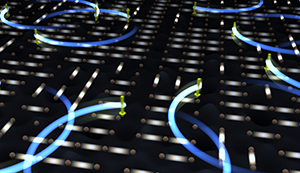New record temperature for a superconductor
21. 8. 2015 | Ars Technica; Johannes Gutenberg University | www.arstechnica.com
Superconductivity was first seen in metals cooled down to close to absolute zero. But after exhausting every metal on the periodic table, the critical temperature at which the metal transitions to superconductivity never budged far from those extremely low temperatures.
That changed dramatically with the development of cuprate superconductors, copper-containing ceramics that could superconduct in liquid nitrogen - still very cold (138K or - 135°C), but relatively easy to achieve. But progress has stalled, in part because we don't have a solid theory to explain superconductivity in these materials.

Now, taking advantage of the fact that we do understand what's going on in superconducting metals, a German research team has reached a new record critical temperature: 203K, or -70°C, a temperature that is sometimes seen in polar regions. The material they used, however, isn't a metal that appears on the periodic table. In fact, they're not even positive they know what the material is, just that it forms from hydrogen sulfide at extreme pressures.
Read more at Ars Technica
Image Credit: Brookhaven National Lab
-jk-




